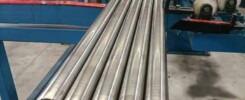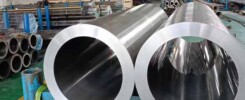Quenching and tempering is a heat treatment process used to improve the mechanical properties of cylinder piston rod. The process involves heating the material to a high temperature, then cooling it rapidly (quenching), followed by reheating it to a lower temperature (tempering). This combination of heating, cooling, and reheating produces significant changes in the microstructure and properties of the material.
Quenching is the process of rapidly cooling a hot rolled steel bar to lock the atoms in place, creating a very hard but brittle microstructure. This is typically done by plunging the hot metal into a cooling bath, such as oil or water. The rapid cooling rate prevents the atoms from rearranging into a more stable, lower-energy state, which results in a high density of defects in the crystal lattice. These defects increase the hardness of the cylinder rod, but also make it more susceptible to cracking.
Tempering is the process of reheating the quenched hydraulic steel rod to a lower temperature, which increases the toughness of the material. During the tempering process, the defects in the crystal lattice rearrange into a more stable, lower-energy state, reducing the density of defects as well as the hardness.
Quenching and tempering, induction hardening all the popular heat treatment for cylinder piston rod production, Datong Group can do all the method to meet clients’s requirements, if any inquiry ,pls contact us for more details.


